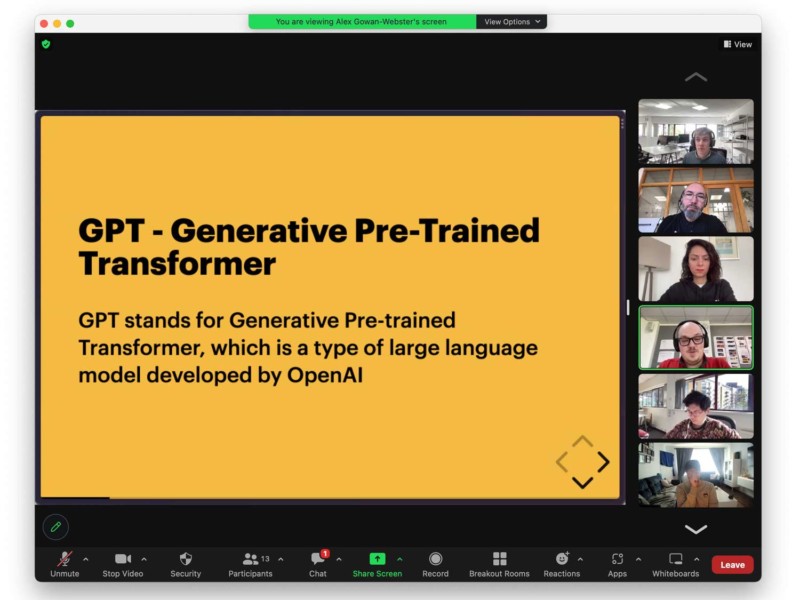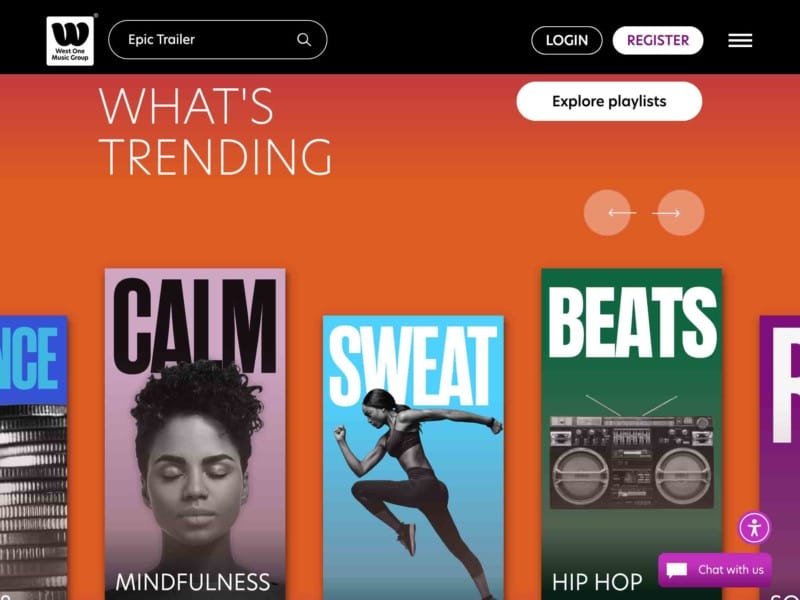Cog’s latest insights into search engines and AI generative search, including a report you can start using right away, from our Digital Strategist and resident SEO expert, Nazma Noor.
Search Engines and SEO for AI Generative Search
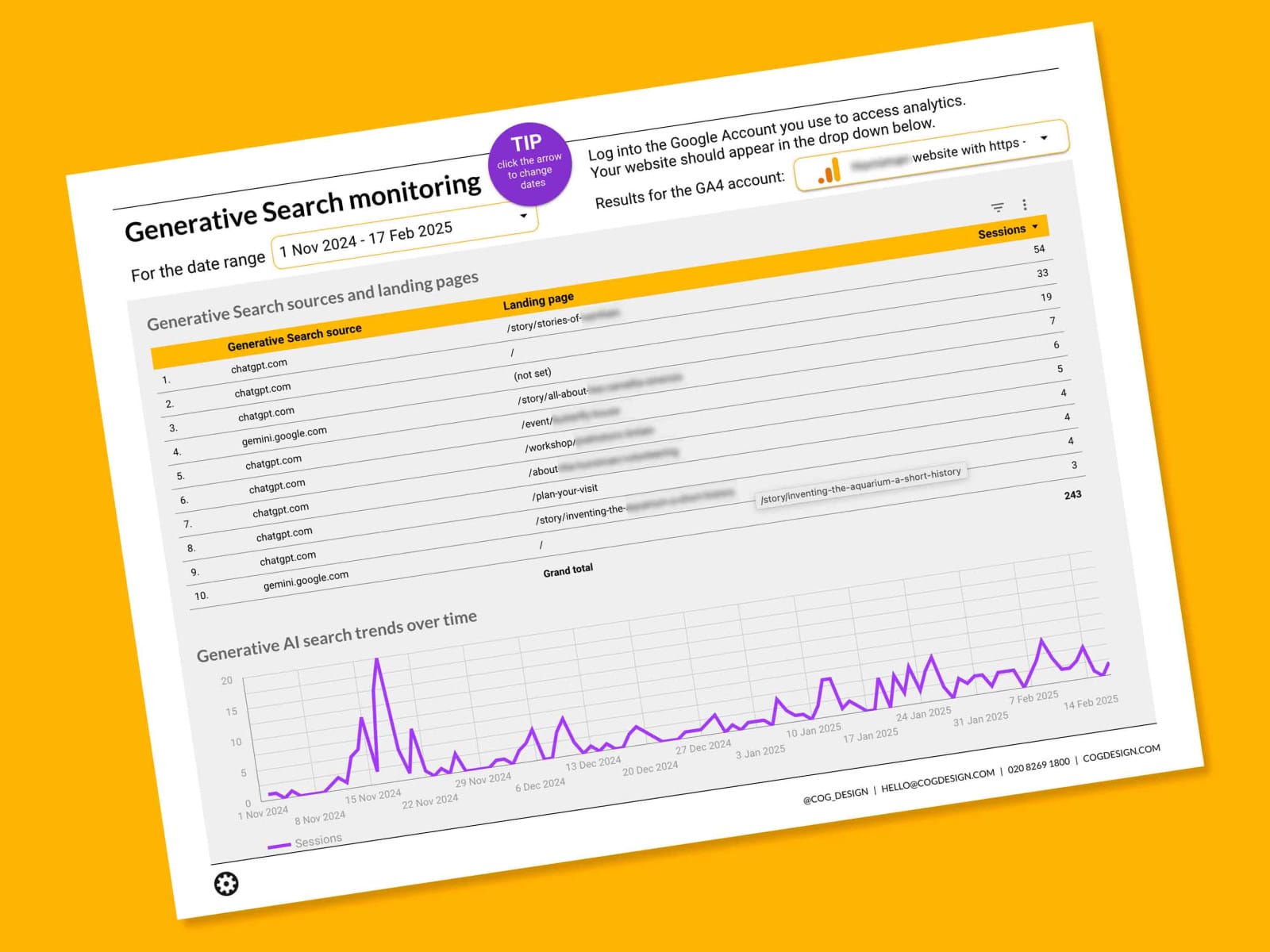
Search Engine Optimisation (SEO) has been an often overlooked area of marketing for arts and culture organisations. Many people are happy that, in a well built site, SEO takes care of itself. When we look at website tracking data in Google Analytics we frequently see “Organic Search” as the biggest driver of users to these websites.
From the conversations I’ve had with Cog’s clients over the last two years and from the positive response we’ve had at industry events and SEO webinars, I know there are ambitions to invest in SEO to make websites even more visible in the search engines. However this work often takes a backseat to other more “immediate” marketing channels. After all it can take months to fully see the results of your website optimisation efforts.
AI Generative Search engines
While arts organisations play catch-up on SEO, search engines are continuing to change and respond to user behaviour.
‘Traditional’ search engines like Google and Bing still account for most user searches, but with an increasing use of AI platforms like ChatGPT, we’re seeing an increase in “Generative Search” behaviour.
Generative Search is a term that encapsulates platforms with a prompt-based AI element, such as ChatGPT, Google’s Gemini, Microsoft Copilot, Deepseek, Perplexity.ai and others. Users prompt and refine search criteria, generating searches.
What’s relatively new is that many of these Generative Search platforms now include links back to their website sources and we’ve started to see these Generative Search sites appearing in Google Analytics, showing them as a source of traffic.
Currently the figures, at least in the arts, are tiny (single figures for some websites). But we can see a trend of these small numbers slowly increasing.
How to check your Generative Search traffic in Google Analytics
If you have Google Analytics 4 tracking on your website, at the moment this type of traffic will fall under Google’s “Default Channel Group” as “Referral” or “Unassigned”.
To view this in Google Analytics 4 you could use the “Traffic Acquisition” report and set a filter to find this information, individually searching for the name of each AI Generative Search platform.
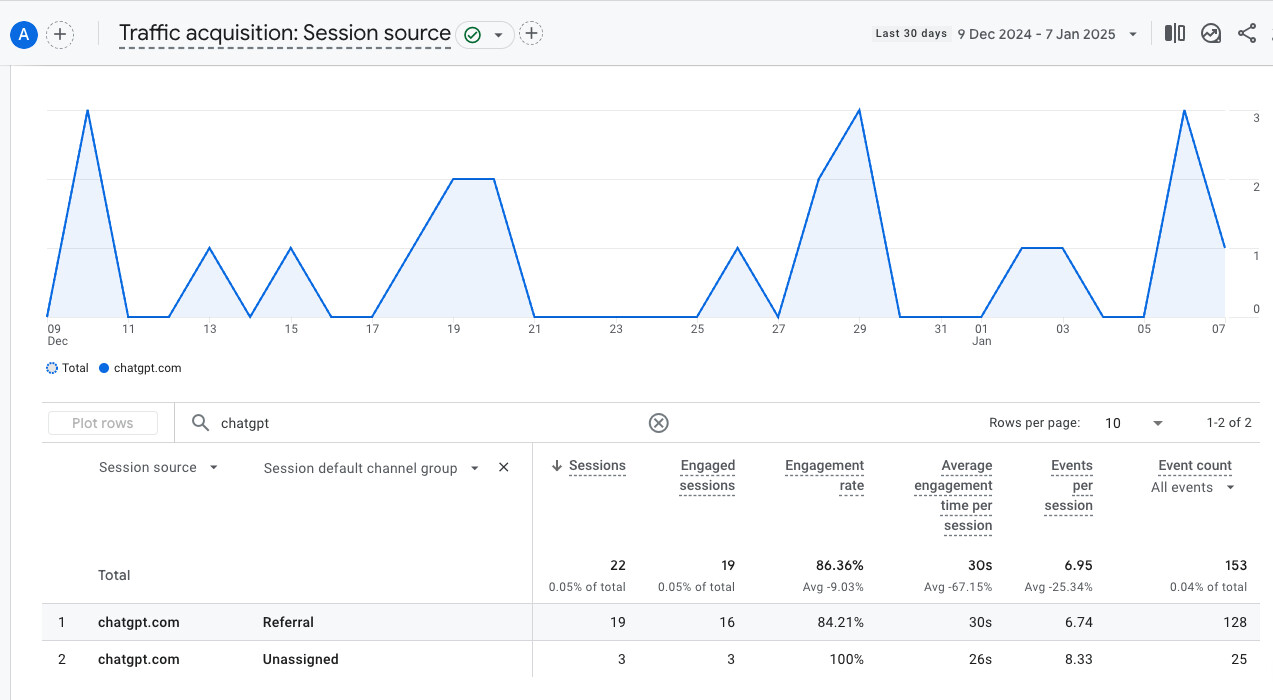 Example of chatgpt referrals appearing in Google Analytics
Example of chatgpt referrals appearing in Google Analytics
A Generative Search reporting dashboard we’ve created for you to use in just a few clicks
To save you having to look up every platform individually, we’ve created an interactive reporting dashboard in Google’s Looker Studio to make monitoring this much easier for you. Click the link below and you should be able to connect your Google Analytics 4 data, giving you a report showing:
- How many sessions you have had from Generative AI sources
- Which specific Generative AI platforms they came from
- Which pages the Generative AI platforms sent users to
You can access the Cog Design AI Generative Search monitoring report to see how your site is performing.
Open the link in the same web browser that you use to log into Google Analytics 4 and you should be able to select your Google Analytics account from the drop-down options at the top right of the report.
The report currently includes traffic from the following Generative Search platforms: chatgpt.com, openai.com, claude.ai, quillbot.com, blackbox.ai, perplexity, copy.am, jasper.ai, copilot.microsoft.com, gemini.google.com and DeepSeek.
Now you have this “nice to know” information, what should you do with this data?
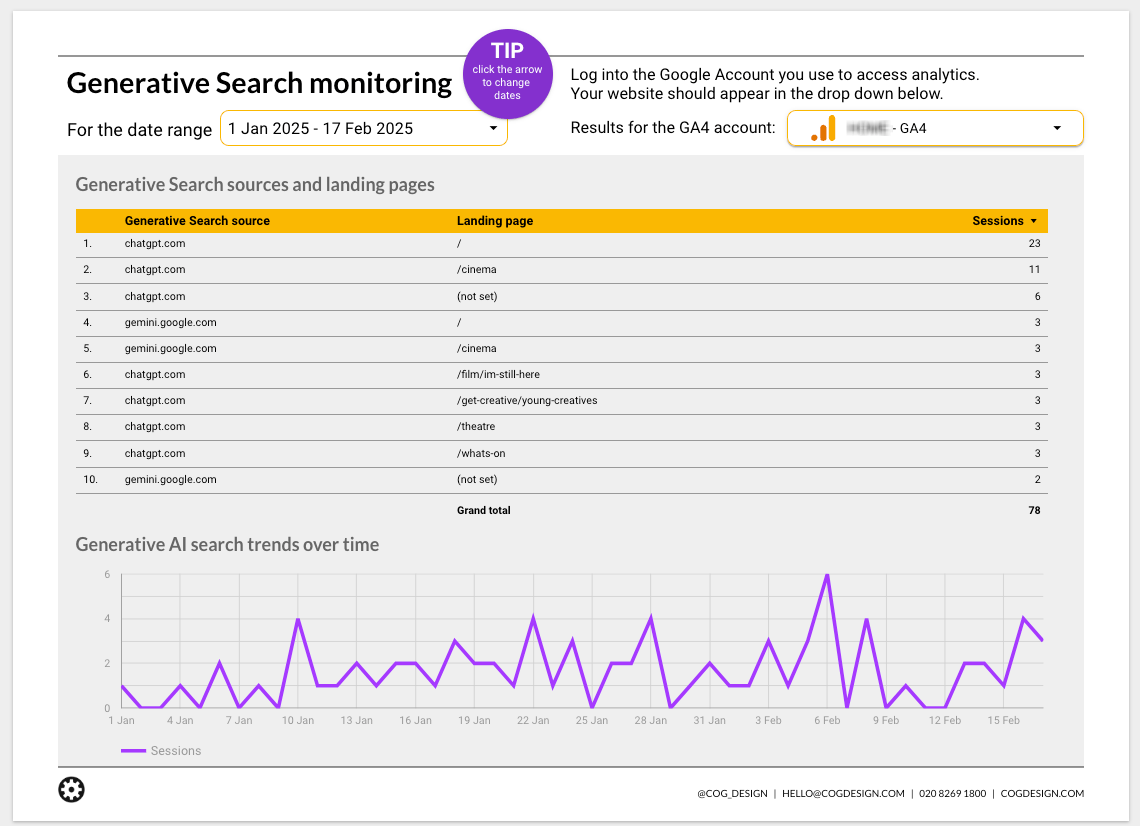 Cog Design AI Generative Search monitoring report example
Cog Design AI Generative Search monitoring report example
What to do with this information
This may seem like “nice to know” information, rather than something you can use to take action, particularly if your traffic from Generative Search is in single figures, but there is some evaluation and planning you can start as you monitor this growing traffic source.
1. Review which pages Generative Search traffic is arriving on
Across Cog’s clients we’re seeing a wide spread of pages receiving traffic from Generative Search platforms – homepages, event pages, artist bio pages, news articles, guides.
In contrast a study by previsible.io looking at data from across a range of non-arts industries showed that 77% of traffic from Generative Search platforms went to blog/news pages.
It’s worth comparing your Generative Search landing pages with your Organic Search landing pages, you may find it’s the same pages which are appearing in both types of search engine.
2. Ask your audiences about their Generative Search usage
Make a note of which Generative Search platforms are appearing in your reports and if you haven’t used them yourself, it’s worth giving them a try to get a feel for the user experience. Can you engineer some prompts which will link back to your website? How is your organisation represented here?
If you have an opportunity, whether that’s through audience surveys, an audience panel or informal conversations, ask the questions – are they using Generative Search platforms? Which ones are they using?
How to optimise your website for Generative Search
Optimising for Generative Search is still a relatively new area. Most SEO experts agree that your usual SEO optimisation will also help your Generative Search numbers. Although there are some specific focus areas which could be worth investing in now.
Identify and address any page speed issues
Page speed and technical web page performance has long been an important factor for SEO from the perspective of the search engines to be able to access and evaluate your website, but also from the perspective of wanting to send users to the best (fastest loading) pages.
You can use free tools like Google’s Core Web Vitals and Page Speed Insights for a deep-dive into any page performance issues. One “quick win” I recommend is reviewing your tracking tags and deleting any that are no longer in use. For example it’s easy to forget that long-term use of behaviour analysis tools like Hotjar and Microsoft Clarity can slow down a website. Have a read of my article about common mistakes and tips for Google Tag Manager.
Add structured data markup to relevant pages
Structured data (also referred to as Schema markup) is code that is added to your web pages to help the search engines interpret key information. There are specific sets of structured data types for different types of content – for example events, recipes, learning courses. You can view some of the structured data types supported by Google here: Structured data gallery
The extra structured data code won’t be visible to users on your web page but it does help the search engines understand the purpose of your web page and has been cited as particularly useful for Generative Search.
Summary
Generative Search platform usage is on the rise and we’re starting to see this converting into website visitors.
We’d recommend bookmarking the Generative Search reporting dashboard and monitoring the data, as well as asking your audiences how they are searching now.
We’ve seen that SEO can often fall lower down on the priority list for arts marketers, but it’s worth getting up to speed on the basics at least. Check out some of the SEO resources we’ve created below.
- PDF – Web Content SEO Guide
- Article – SEO in the cultural sector
- Article – Compressing images for your website



